When you explore the oldest Filipino fashion brands, you'll find a narrative rich in culture and artistry. Rustan's, established in 1952, set the tone for luxury retail, while Bench, launched in 1987, revolutionized casual wear reflecting everyday Filipino life. Alongside them, brands like Rajo Laurel and Aranaz celebrate high-fashion and artisan craftsmanship, embracing local materials and traditions. These brands not only showcase unique styles but also highlight the significance of sustainability and community artistry. This vibrant history continues to influence contemporary trends, making the Filipino fashion scene dynamic and exciting. There's so much more to uncover!
Historical Overview of Filipino Fashion Brands
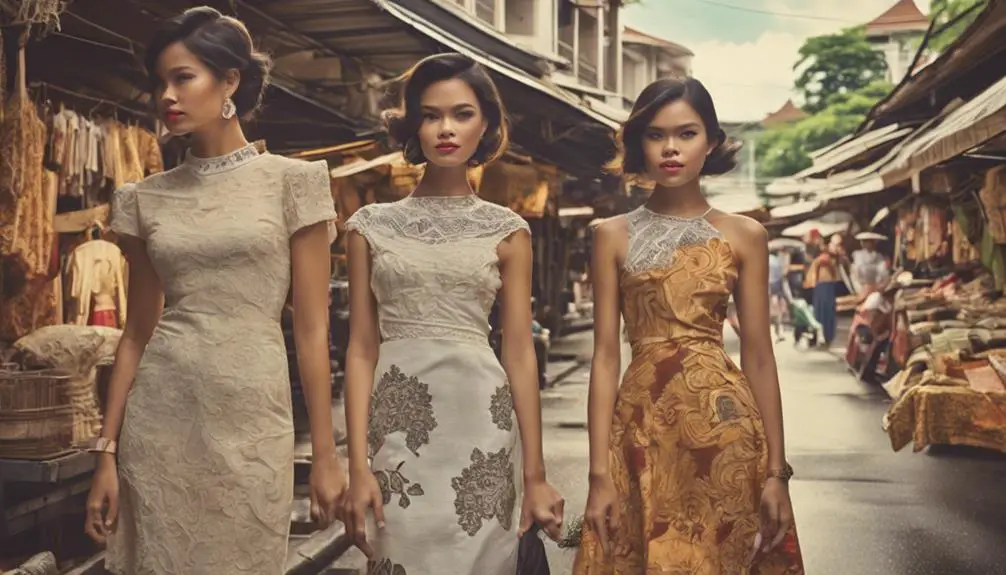
Filipino fashion brands have a rich history that reflects the country's culture and artistry, with notable milestones marking their evolution. It all began with the establishment of Rustan's in 1952, laying the groundwork for a burgeoning retail landscape that showcased Filipino creativity and craftsmanship. As you explore the timeline of Filipino fashion, you'll notice the emergence of iconic brands that have shaped its identity.
In 1987, Bench burst onto the scene, quickly becoming a leading lifestyle brand known for its casual wear. This brand not only popularized Filipino fashion but also set the stage for a diverse range of products that catered to various tastes. Then came Aranaz in 1998, celebrated for its tropical-inspired bags crafted from local materials, emphasizing skillful Filipino craftsmanship and the rich heritage of the Philippines.
The turn of the millennium introduced Kultura in 2001, a brand dedicated to promoting Filipino craftsmanship through a wide array of traditional and contemporary handmade products. This commitment to local artisans further reinforced the importance of Filipino designers in the fashion industry. Finally, Rajo Laurel, founded in 1991, emerged as a beacon of high-fashion designs, gaining recognition both locally and internationally for showcasing Filipino artistry in couture.
Together, these brands have not only enriched the Filipino fashion landscape but also painted a vibrant picture of the country's culture and craftsmanship, setting the stage for future generations of designers to shine.
Iconic Brands and Their Stories
The stories behind iconic brands reveal the heart of Filipino fashion, showcasing how creativity and culture intertwine. You can see this beautifully illustrated in the journeys of some of the oldest Filipino fashion brands, each one a reflection of the vibrant tapestry of Filipino culture, fashion and beauty.
| Brand | Established | Specialty |
|---|---|---|
| Bench | 1987 | Casual wear and lifestyle products |
| Kultura | 1998 | Filipino craftsmanship and artisan goods |
| Rajo Laurel | 1999 | High-fashion pieces with traditional influences |
| Aranaz | 1998 | Tropical-inspired bags using local materials |
Bench, with its casual wear, reflects the everyday life of Filipinos, while Kultura celebrates artisan craftsmanship, offering products that showcase the diverse heritage of the Philippines. Rajo Laurel stands out for blending modern aesthetics with traditional elements, gaining both local and international acclaim. Francis Libiran, known for luxurious couture, elevates Philippine fashion to red-carpet status through intricate designs. Aranaz, founded by a mother-daughter trio, emphasizes the weaving industry by creating stunning bags that highlight the skillful craftsmanship of local artisans.
These brands not only embody the essence of Filipino culture but also pave the way for future generations of designers. Their stories inspire pride in Filipino artistry, showing how fashion can be a powerful expression of identity and heritage.
Cultural Significance of Fashion
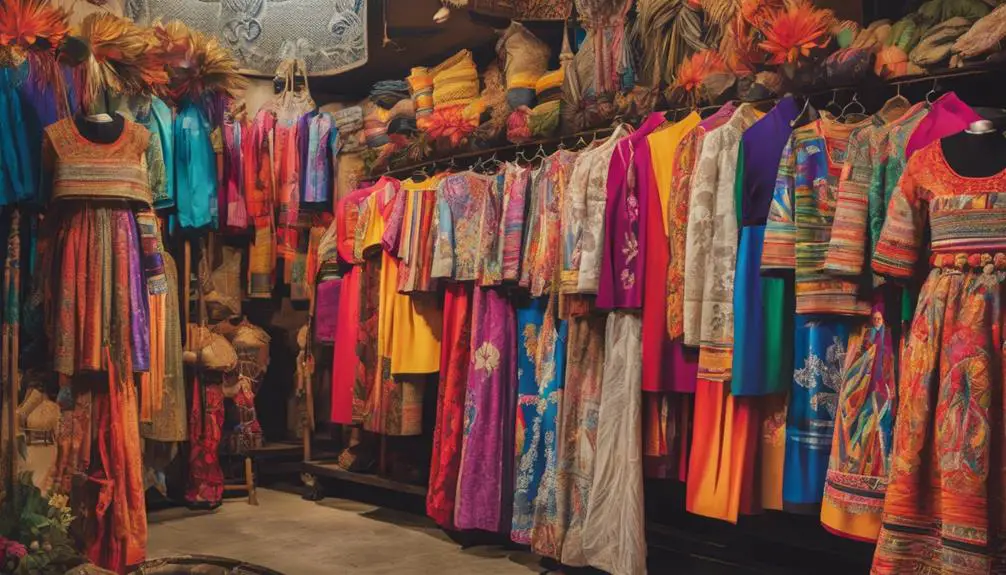
Fashion in the Philippines isn't just about clothing; it's a vibrant expression of cultural identity and heritage. When you explore Filipino fashion, you uncover a rich tapestry woven with the threads of history, tradition, and artistry. Brands like Rustan's and Kultura not only showcase exquisite designs but also celebrate Filipino craftsmanship, ensuring that local artisans thrive. By incorporating traditional textiles like piña and jusi into modern fashion, these brands honor the cultural heritage of the Philippines, making each piece a representation of its roots.
Here are a few key aspects that highlight the cultural significance of Filipino fashion:
- Symbolism: The Barong Tagalog and Maria Clara Dress represent the fusion of indigenous, Spanish, and American influences, underscoring the unique Filipino identity.
- Craftsmanship: Local artisans employ traditional techniques, preserving age-old skills while creating contemporary designs that captivate both local and international audiences.
- Cultural Pride: Events like Philippine Fashion Week serve as platforms for designers to showcase their work, promoting pride in Filipino culture and artistry.
- Sustainability: Emphasizing indigenous materials supports environmental sustainability, encouraging responsible fashion choices.
- Global Impact: Filipino designers contribute greatly to the global fashion scene, merging traditional elements with modern aesthetics, and thereby elevating the country's status in the industry.
In every stitch and pattern, Filipino fashion tells a story, making it an essential part of the nation's cultural dialogue and a proud celebration of its heritage.
Evolution of Filipino Fashion Design
Fashion's evolution in the Philippines reflects a dynamic interplay of cultural influences and historical milestones. From indigenous textiles to contemporary designs, Filipino fashion showcases a tapestry of history. You can trace its roots back to traditional garments like the Barong Tagalog and the Maria Clara dress, which set the stage for modern interpretations. Spanish colonization introduced European styles, creating unique pieces like the Barot Saya, blending local materials with Hispanic design.
As American colonization unfolded in the early 1900s, Western fashion trends began to shape Filipino attire, giving rise to the Traje de Mestiza. This garment harmonized local and foreign influences, marking a pivotal moment in fashion history. The post-war era ushered in a laid back approach, as global movements inspired more casual clothing styles, including the adoption of the New Look in the 1950s and mod fashion in the 1960s.
Today, contemporary Filipino fashion embraces sustainability while reviving traditional weaving techniques. Brands like Pio Pio and ANTHILL Fabric Gallery are at the forefront, offering a collection of unique designs that celebrate cultural heritage.
Here's a glimpse of the evolution of Filipino fashion over the years:
| Era | Influences | Key Styles |
|---|---|---|
| Indigenous | Indigenous textiles | Barong Tagalog, Maria Clara |
| Spanish Colonization | European styles | Barot Saya |
| American Colonization | Western trends | Traje de Mestiza |
| Post-War | Global fashion movements | New Look, Mod Fashion |
| Contemporary | Sustainability & heritage revival | Pio Pio, ANTHILL Fabric Gallery |
This journey illustrates how Filipino fashion adapts and evolves, celebrating its rich heritage while looking towards the future.
Contemporary Impact and Future Trends
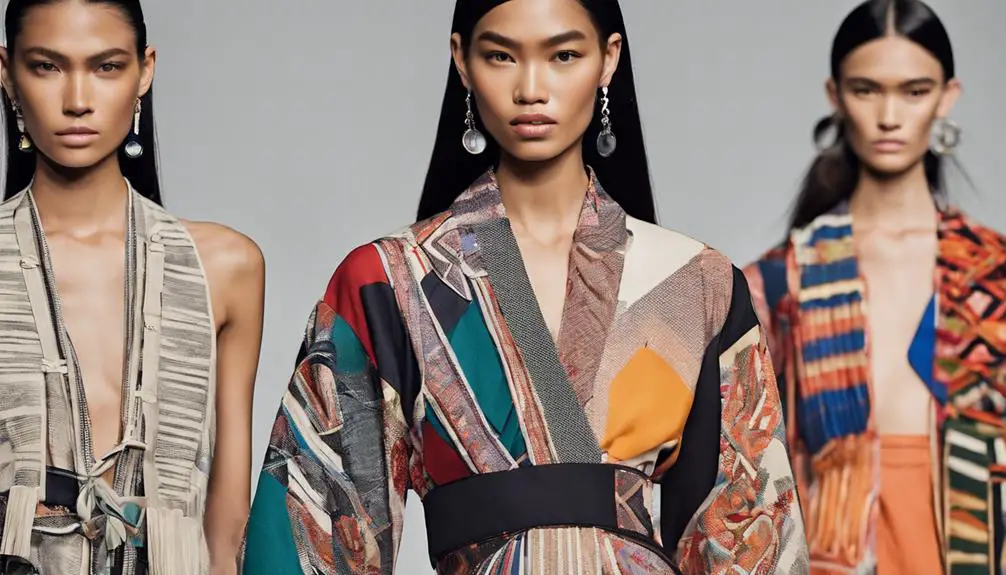
As Filipino fashion embraces its rich heritage, it also looks toward a vibrant future marked by innovation and sustainability. The evolution of brands like Aranaz and Bench highlights a commitment to local craftsmanship, where traditional textiles meet contemporary design. This blend not only honors the past but also caters to modern consumers enthusiastic for unique, culturally resonant pieces.
You might be excited to see how the future of Filipino fashion is unfolding with several key trends emerging:
- Revival of Traditional Textiles: Brands like Pio Pio are breathing new life into the weaving industry, creating trendy items that attract younger audiences.
- Sustainable Practices: More designers are adopting eco-friendly materials and processes, ensuring that their fashion choices are kind to the planet.
- Emphasis on Local Craftsmanship: Consumers are increasingly supporting brands that showcase Filipino artistry, leading to a more profound appreciation of local skills.
- Collaboration Across Borders: The rise in partnerships between local and international designers broadens the visibility of Filipino fashion on a global stage.
- Post-Pandemic Renaissance: The pandemic has sparked a renewed interest in homegrown brands, as shoppers seek meaningful connections to their culture.
The future of Filipino fashion is bright, promising a landscape where tradition and innovation coexist beautifully. By embracing sustainable practices and celebrating local craftsmanship, you're not just witnessing a trend; you're participating in a movement that honors the past while paving the way for a more inclusive and eco-conscious future.
Frequently Asked Questions
What Is the Oldest Clothing in the Philippines?
You might be surprised to learn that the oldest clothing in the Philippines includes historical garments like the Bahag and Barong Tagalog. These pieces, crafted from traditional textiles, reflect the rich heritage of indigenous attire.
Who Is the First Fashion Designer in the Philippines?
You'll find that Rajo Laurel stands as the first fashion designer in the Philippines. His fashion milestones reflect designer influence and cultural heritage, blending traditional elements with modern aesthetics, showcasing Filipino craftsmanship on international runways.
What Is the Most Famous Filipino Brand?
Picture vibrant colors and unique textures—Bench stands out as the most famous Filipino brand. Its evolution reflects cultural influences, iconic fashion collaborations, and a celebration of contemporary Filipino style that resonates with both locals and tourists alike.
What Are Old Filipino Clothes Called?
Traditional Filipino clothes, like the Barong Tagalog and Baro't Saya, reflect cultural significance. You'll find indigenous textiles woven into these garments, showcasing the rich heritage and artistry of Filipino craftsmanship throughout the country's diverse regions.
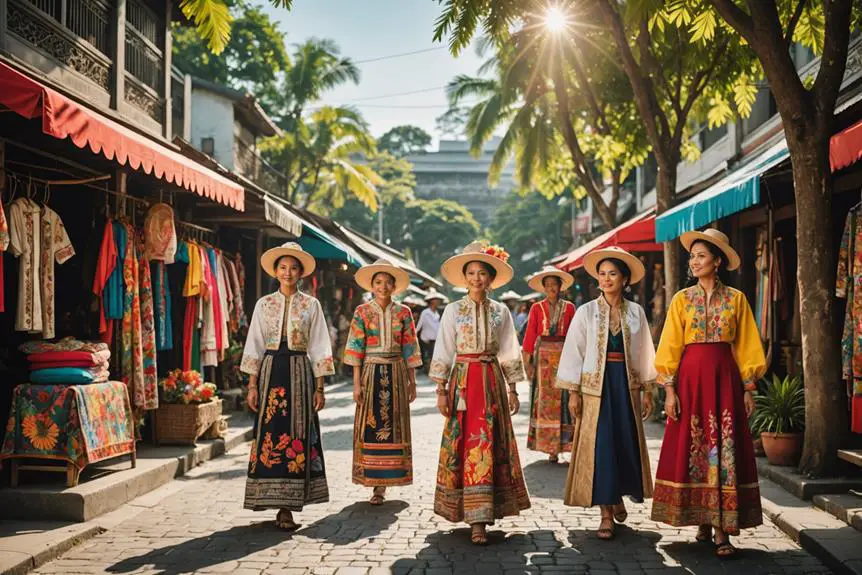


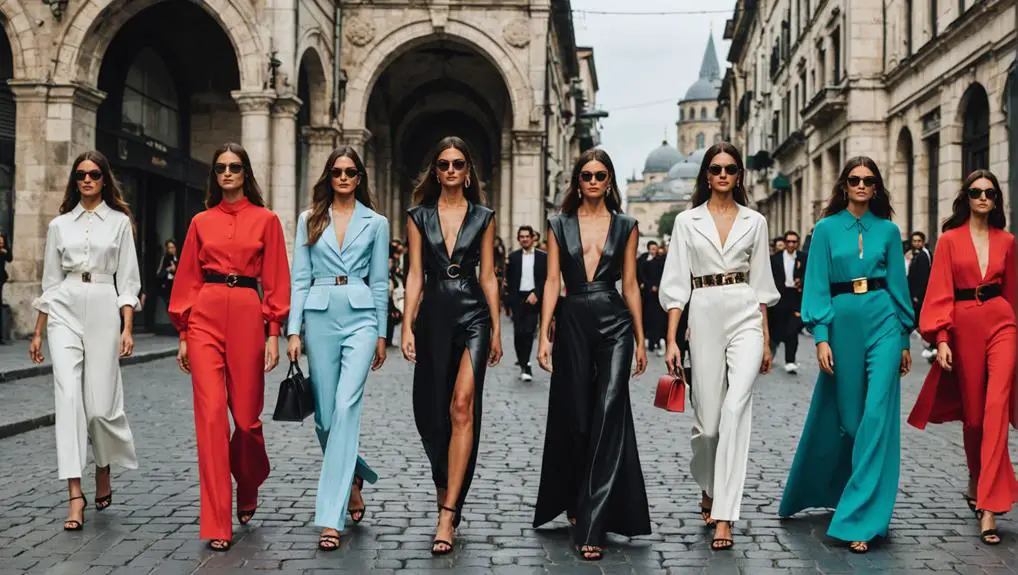
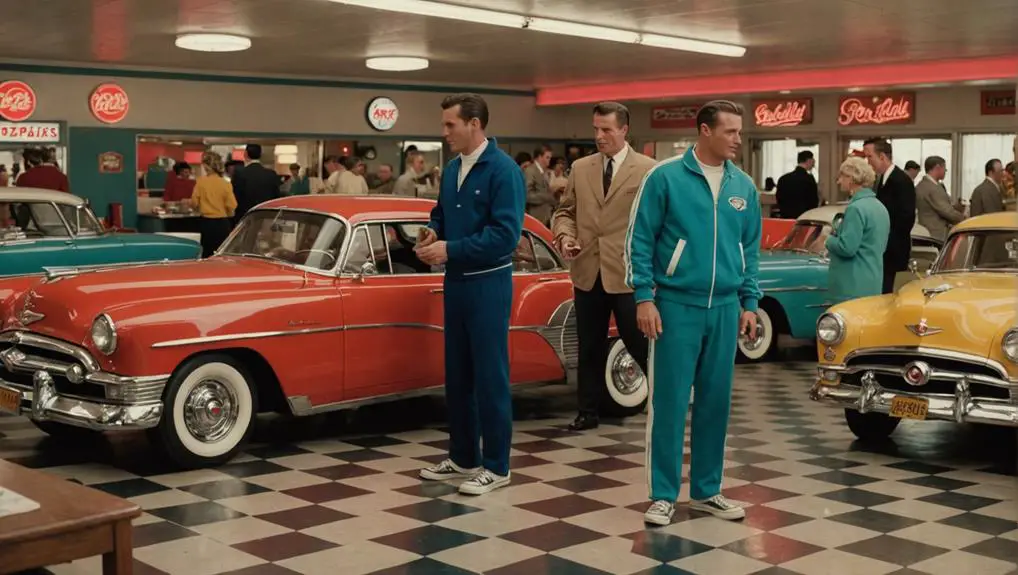
What’s Going down i am new to this, I stumbled upon this I have discovered It positively useful and it has helped me out loads.
I’m hoping to contribute & help other customers like its helped me.
Great job.
casino en ligne fiable
Does your website have a contact page? I’m having a tough time
locating it but, I’d like to send you an email.
I’ve got some creative ideas for your blog you might be interested in hearing.
Either way, great website and I look forward to seeing it
improve over time.
casino en ligne
I’m gone to convey my little brother, that he should also go to see this website
on regular basis to take updated from hottest news.
casino en ligne francais
excellent publish, very informative. I’m wondering why the opposite specialists of this sector don’t notice this.
You must continue your writing. I am confident, you
have a huge readers’ base already!
meilleur casino en ligne
We’re a group of volunteers and starting a new scheme in our community.
Your website provided us with valuable information to work on. You have done a formidable job and our entire community will be grateful to you.
casino en ligne fiable
Quality content is the key to invite the viewers to pay a
quick visit the web site, that’s what this web site is providing.
casino en ligne
For newest information you have to pay a visit world-wide-web and on world-wide-web I found this web page as
a finest site for newest updates.
casino en ligne France
Thanks on your marvelous posting! I really enjoyed
reading it, you happen to be a great author.I will ensure that I bookmark your blog and will
come back very soon. I want to encourage continue your great writing, have a nice day!
casino en ligne
I’m more than happy to find this website. I want to
to thank you for your time just for this fantastic read!!
I definitely appreciated every little bit of it and
I have you book marked to look at new information in your blog.
casino en ligne francais
I’m curious to find out what blog platform you have been utilizing?
I’m having some small security problems with my latest blog and I’d like to
find something more safeguarded. Do you have
any suggestions?
meilleur casino en ligne